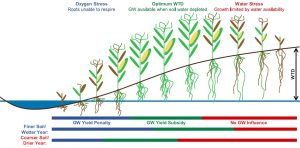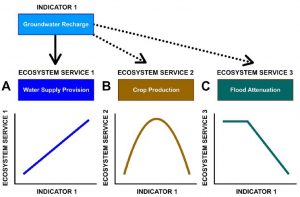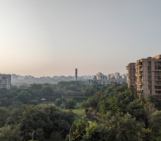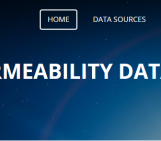By: Sam Zipper, Postdoctoral Fellow, McGill University/University of Victoria
When people think of groundwater in agricultural landscapes, pumping and irrigation are usually the first thing that comes to mind. However, groundwater can have a more subtle but extremely important impact on crop production when we decide to leave it underground:
When there is shallow groundwater beneath an agricultural field, some of the water creeps upwards from the water table, which increases the soil water available in the root zone of crops. This helps areas with shallow groundwater perform better during drought than areas where the water table is deeper, and is known as a ‘groundwater yield subsidy’; however, if soils get too wet, crop roots can’t breathe, which leads to a ‘groundwater yield penalty’:

Figure 1. Diagram showing how shallow groundwater can help or hurt a crop, and how differences in soil texture or weather conditions impact that relationship. Source: Zipper et al. (2015) Water Resources Research
In a recent study, we found that this effect was largest in coarser grained soils, which drain water much more quickly, but the water table had to be very shallow to have a positive effect. Furthermore, as described in the video, the groundwater yield subsidies during dry years were big enough to outweigh the groundwater yield penalties in wet years at the fields in south-central Wisconsin that we were studying. This means that agricultural drainage systems (such as tile drains) which are designed to lower the water table might inadvertently be making crops more vulnerable to drought, even as they improve performance during wet years.
From a broader perspective, this signals that groundwater recharge – which is conventionally thought of as beneficial from a water supply perspective for replenishing depleted aquifers – is not always a good thing:

Figure 2. Impact of groundwater on different ecosystem services. Source: Booth et al. (2016) Ecosystem Services.
Depending on the goal, groundwater can provide an ecosystem service, ecosystem disservice, or both at different times of the year! From a hydrogeology perspective, this means it is important to understand not just how much groundwater recharge is occurring, but how the entire hydrological cycle interacts with ecosystems and the benefits societies derive from them.
Additional videos associated with the project are available on YouTube. These videos were produced by the University of Wisconsin-Madison Water Sustainability and Climate project.
References
Booth EG, SC Zipper, CJ Kucharik, SP Loheide II (2016). Is groundwater recharge always serving us well? Water supply provisioning, crop production, and flood attenuation in conflict in the Yahara River Watershed, Wisconsin, USA. Ecosystem Services, 21, Part A:153-165. DOI: 10.1016/j.ecoser.2016.08.007
Zipper SC, ME Soylu, EG Booth, SP Loheide II (2015). Untangling the effects of shallow groundwater and soil texture as drivers of subfield-scale yield variability. Water Resources Research 51(8): 6338-6358. DOI: 10.1002/2015WR017522.




